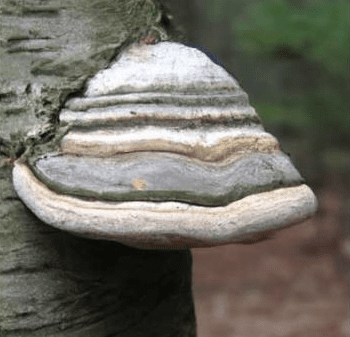Plastic pollution has become a global environmental crisis, prompting scientists to explore sustainable alternatives. One of the alternatives that has received a lot of attention is the mushroom flint fungus, scientifically known as the woodshoe laminaria. This odd-looking fungus possesses extraordinary properties that make it a potential biodegradable alternative to plastic.

Traditional Use of Mushroom Flint Mushrooms - for Fire Lighting
The name "lighter fluid" comes from its historical use as an ignition material. The dried offspring of the Woodruff's Laminaria are used as kindling to catch sparks for easy ignition. This mushroom is characterized by its distinctive appearance, with its upper surface usually brownish-gray in color and small holes underneath where spores are released. It usually grows on the bark of dead or dying trees and displays hoof-shaped substrates with a tough woody structure. The growth of mushroom flint fungi depends on specific environmental factors. It grows in temperate regions with cool and humid climates. Birch, beech and maple trees provide ideal conditions for its growth. The fungus forms a symbiotic relationship with these trees, extracting nutrients as it breaks down the dead tissue of the tree. Today, efforts are being made to cultivate this fungus under controlled conditions. It can be grown on substrates made of wood chips or sawdust, creating an environmentally friendly and sustainable source of this valuable resource.
More Uses for Mushroom Flint - Anti-Inflammatory, Antibacterial and Antioxidant
Mushroom Flint Fungus has a variety of applications. Traditionally, as mentioned earlier, it has been used to light fires. However, it is used for more than that. It has been used in traditional herbal medicine for centuries due to its anti-inflammatory, antibacterial and antioxidant properties. Phytochemical analyses have identified a variety of bioactive compounds, including triterpenoids, steroids, and polysaccharides, that have been linked to its health benefits. Triterpenoids exhibit anti-inflammatory and anticancer properties, while steroids contribute to their antimicrobial activity. Polysaccharides exhibit immunomodulatory effects, making fungi potential candidates for therapeutic applications.
The latest use for mushroom flints - degrading certain plastics
The unique properties of the mushroom Pyrocanthus have also attracted the attention of industries looking for sustainable alternatives to plastics. Notably, researchers have found that the fungus can degrade certain types of plastics, including polyurethane, through an enzymatic process. This ability opens up new avenues for the development of biodegradable materials and the disposal of plastic waste.
Mushroom Flavobacterium, Laminaria xylostella shows potential as an alternative biodegradable material based on its enzymatic degradation ability and its interaction with plastic polymers.
Plastics consist of long chain polymers that are resistant to natural degradation processes. However, the mushroom flint fungus produces specific enzymes, such as lignin peroxidase and manganese peroxidase, which play a crucial role in the breakdown of complex molecules, including plastic polymers. These enzymes have the ability to sever the chemical bonds in plastics and convert them into simpler compounds. The enzymatic degradation process involves the enzymes acting on the chemical bonds in the molecular structure of the plastic, destroying its integrity. As a result, long polymer chains are broken down into smaller fragments that can be further metabolized by microorganisms in the environment.
In addition, Mushroom Flavobacterium exhibits an affinity for certain types of plastics, such as polyurethane. This suggests that it possesses a specific mechanism for recognizing and interacting with plastic surfaces, thereby facilitating the enzymatic degradation process. Once plastic is broken down into simpler compounds, it becomes more readily available to natural microbial communities in the environment. These microorganisms, including bacteria and fungi, can further metabolize the degraded plastic fragments, using them as a carbon source for their growth and energy needs.
As an alternative to traditional plastics, the biodegradability of mushroom flint fungi offers several advantages. First, it reduces the accumulation of plastic waste in landfills and ecosystems, addressing the pressing problem of plastic pollution. Second, the degradation process leads to the formation of environmentally friendly by-products that can be safely absorbed into the ecosystem. Finally, it provides a sustainable approach by utilizing natural resources and harnessing the power of enzymatic processes present in fungi.
Further research is necessary to fully realize the potential of mushroom flint fungi as biodegradable alternatives to plastics.
This includes optimizing degradation efficiency, understanding the specific enzymatic mechanisms involved, and ensuring scalability and safety of implementation. Nonetheless, the unique properties of the mushroom flint fungus offer a promising avenue for combating plastic pollution and moving towards a more sustainable future.
In short, the discovery of this mushroom-degradable plastic opens up new possibilities in the fight against plastic pollution. This strange looking fungus has already demonstrated its extraordinary ability to break down various plastic materials through enzymatic degradation. With further research and development, we can envision a future where this fungus will be a sustainable solution for managing plastic waste and promoting the use of biodegradable materials. As we continue to explore the wonders of nature, the potential for a cleaner, more environmentally conscious world is within our grasp.

